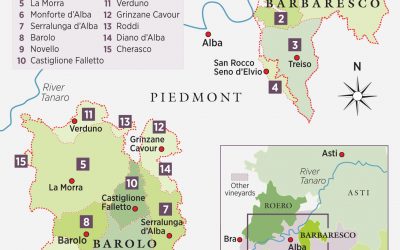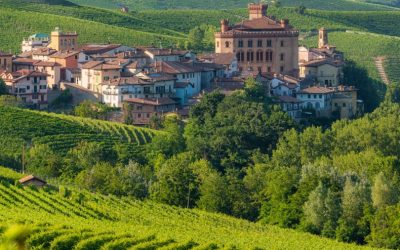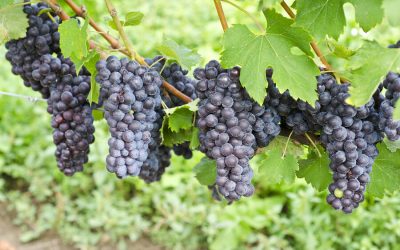Barolo Cru | Cannubi
The world of Italian wine is brimming with prestigious regions and vineyards, and among them, the Barolo Cru, specifically Cannubi, shines brightest. Known globally, Cannubi is not only Barolo’s most illustrious Cru but also its oldest, tracing its roots back to 1752. This piece takes you on a captivating journey through the hallowed rows of this revered vineyard, offering a deeper understanding of its rich history, unique terroir, and the extraordinary wines it produces.
Understanding Barolo Cru: The Pride of Italian Viticulture
“Cru” is a French term that refers to a vineyard or group of vineyards, especially one of recognized quality. It has been adopted in various wine regions worldwide, including Barolo in Italy. A “Barolo Cru” is a vineyard or a specific plot within a vineyard that’s distinguished for its unique microclimate, soil composition, and consistent production of high-quality Barolo wine.
In the Barolo region, there are several well-recognized Crus, each lending its distinctive characteristics to the Nebbiolo grapes grown there and, consequently, to the wines produced. The diversity of the Crus in Barolo is a testament to the complexity and depth of the region’s wine culture. Each Cru is a unique expression of terroir, revealing a particular interpretation of the region’s climate, geology, and human history in the wines it produces.
Discover all the best CRU fo Barolo Kings of Wines.
What is Capalot Cru & Vineyard?
Capalot Cru & Vineyard is a prestigious vineyard located in the Piedmont region of northern Italy, particularly renowned for its Barolo wine. The term “Cru” in its name refers to a specific vineyard or group of vineyards, especially one of recognized quality, and Capalot is indeed recognized for its exceptional quality.
Situated on hilly terrains that boast unique microclimates, the vineyard is planted mainly with Nebbiolo grapes, the variety used to produce Barolo, one of Italy’s most esteemed wines. The complex combination of soil, climate, and meticulous vineyard management at Capalot results in wines that are elegant, powerful, and characterized by a striking depth of flavor. These qualities have earned Capalot Cru & Vineyard a stellar reputation among wine connoisseurs worldwide.
In addition to producing exquisite wines, Capalot Cru & Vineyard also represents a significant piece of Italy’s wine history, having been a major part of the region’s winemaking tradition for centuries. The vineyard stands as a testament to the passion and dedication that goes into creating the magnificent Barolo wines, thus making it a must-visit destination for wine enthusiasts.
Cannubi: The Jewel in the Crown of Barolo Crus
Cannubi is often referred to as the “grand cru” of Barolo, recognized for its consistently outstanding wines. The Cannubi hill, extending over 34 hectares, houses some of the oldest vineyards in the Barolo region, with a winemaking history tracing back to the early 18th century.
Cannubi’s terroir is unique and ideal for cultivating Nebbiolo grapes. The hill’s particular position, the composition of the soil (a mix of clay, silt, and sand), and the specific microclimate (aided by the hill’s exposure to sunlight) together provide excellent conditions for the grapes to ripen evenly and express a rich, complex profile.
The Barolo Cannubi is appreciated for its balance, elegance, and aromatics. It delivers an exquisite array of flavors, including notes of red fruits, flowers, spices, and earthy undertones. The wine also stands out for its longevity – it can be cellared for several years, during which it continues to develop nuanced complexity.
What are the crus of Barolo?
In wine terminology, “cru” is a French term that comes from the past participle of “croitre”, meaning to grow. When a French wine is referred to as a “cru”, it signifies that the wine is prestigious and of particularly high quality for the area where the vineyard is grown. In the context of Barolo, the term “cru” is used to designate specific vineyards that produce high-quality grapes.
What does Cannubi mean?
Cannubi refers to a specific mention or classification of about 14 hectares that includes the central and summit part of the hill. It is considered one of the most prestigious crus in the Barolo region due to its unique microclimate and soil composition that create an optimal growing environment for Nebbiolo grapes.
What are the municipalities of Barolo?
The Barolo region includes 11 different municipalities. Some are entirely within the appellation (Barolo, Castiglione Falletto, and Serralunga d’Alba), while others are partially included (La Morra, Monforte d’Alba, Roddi, Verduno, Cherasco, Diano d’Alba, Novello, and Grinzane Cavour).
What is the origin of Barolo wine?
Barolo wine started appearing around the mid-19th century, originating from the namesake village in the Langhe region, in the Province of Cuneo. The vineyards and cellars were initially part of the estate of the Marquis Tancredi Falletti and Giulia Colbert Falletti di Barolo.
What is the difference between Nebbiolo and Barolo? Nebbiolo is the grape variety used to produce Barolo wine. Nebbiolo is known for its ability to produce wines with high tannins, high acidity, and complex aromas. Barolo is a wine made from 100% Nebbiolo grapes and comes from the Barolo region in Piedmont, Italy. It’s one of the most famous and highly-regarded wines made from Nebbiolo, known for its aging potential and complexity.
Barolo Cru | Cannubi

Every wine region has its star, and in Barolo, that star is undoubtedly Cannubi. Known by wine lovers around the globe, this revered Barolo Cru is not just the most famous but also the oldest, its vinicultural history dating back to 1752. In this video, we take you on a visual exploration of this majestic hill, unraveling the stories behind the exceptional wines it produces.
The Gigi Rosso Winery: An Integral Part of Barolo’s Legacy
Situated in the heart of Barolo, the Gigi Rosso winery is an embodiment of dedication, passion, and respect for the land and its gifts. We’ve strived to master the art of crafting exemplary wines that express the unique attributes of our terroirs, particularly the legendary Cannubi Cru.
Conclusion
In conclusion, Barolo Cru and Cannubi, in particular, are shining examples of how specific vineyard sites can significantly influence the quality and character of wine. They reflect the profound connection between the land and the wine produced, embodying the very essence of the concept of terroir.




